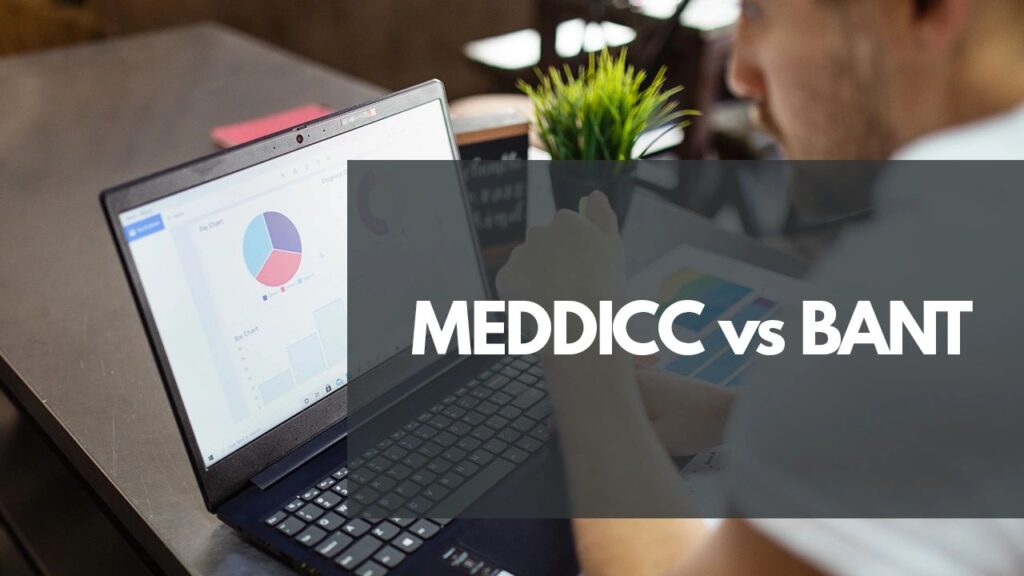While handshake deals between swashbucklers sealed with shots of cheap whiskey are undoubtedly romantic, you’re not going to make any friends waltzing into your prospective client’s office with a peg leg and a yo-ho-ho. You could make friends in the parking lot, perhaps, but that’s not why you’re on a marketing blog, is it? Still, meet us outside later—wedding season has been a drag this summer, and we could use a hoot.
There is no shortage of methods for connecting your services with prospective clients. Likewise, no lack of frustrations comes with recognizing the holes in their business plan that you are perfectly equipped to address!
With this challenge in mind, we’ll be examining two popular sales strategy methods—BANT and MEDDICC—in terms of what they can offer your sales process to help clarify your pitch, intent, and strategic deployment.
What Are They?
These techniques work primarily as a discussion tool. They are not a checklist to walk through like a home inspection—it is a dialogue meant to foster trust mutually between your business and the client’s needs. You wouldn’t sell a sous vide machine to a seal like you shouldn’t sell your valuable prospecting time to a client ill-suited for the service. Like any relationship, sales go both ways.
Assessing opportunity and articulating your place within a prospective client’s model is critical. BANT and MEDDICC can both get you there in their ways and with their clarity of persuasion. Let’s get into it.
What is BANT?
BANT stands for [B]udget, [Authority], [Need], and [T]. This method streamlines your sales by chronologically assessing a few key transaction features before committing fully to a pitch or negotiation.
Firstly, “budget” references the client’s budget. Simply put, do they have the resources to commit to your offering? If not, this is perhaps not the best time to pursue.
Secondly, “authority” is about the key decision-maker who can sign off on the deal. Are you speaking to the right person? The server at the restaurant can’t remake your burger at the table—you’ve got to make sure your words get to the right place.
Thirdly, “need” is about just how effective your service will be concerning the challenges the client is facing. If the demand for a solution is high, you’ve got more bargaining power following discovery. That means potential for a more accessible, faster sale! Sign us up!
Lastly, “time” is a critical indicator of business potential. Even if the stars have aligned, when will this deal come to fruition? Is it worth the wait if you could be pursuing other leads sooner? Even if the need is high, developments during exploratory phases can drastically change client timelines, often unpredictably.
How to Use BANT?
These four pillars create a compelling and streamlined method for building your sales portfolio and pipelining leads effectively. As mentioned earlier, these are not meant to be checklist items but rather signposts that encourage or discourage moving forward. They are entwined in your discussions about the goals of their business and the strengths and limitations of your service. Turn those cold calls hot with a bit of personal pizazz.
Don’t end up putting your foot in your mouth. BANT ensures both parties are on the right track and that you’re finding as good a fit for your time as they are for your services.
What is MEDDICC?
Unsurprisingly, MEDDICC is a slightly longer and more in-depth process. There are more letters, after all!
MEDDICC stands for [M]etrics, [E]conomic Buyer, [D]ecision Criteria, [D]ecision Process, [I]dentify Pain, [C]hampion, and [C]ompetition. The longer process allows you to focus on particular pieces that may be overlooked in a general BANT-driven negotiation. Despite reading like a to-do list, it should not be used as an inflexible strategy but rather a guiding tool that can help you ask the right questions in your first or next client meeting.
Metrics encourages you to quantify how and where your service may come into play to serve client needs. Economic Buyer is about learning who holds the economic purchasing power and how we may justify the sale to them. Decision Criteria is in understanding and optimizing the internal processes that allow a deal to go through, whether for need, cost-cutting, or convenience. The Decision Process is the stage of negotiation that takes place before an agreement may be struck. Identifying Pain will result from your needs analysis in establishing where your product can relieve the client’s problems. Champion is your friend on the inside—key personnel interested in your service can leverage your services from within the client’s company. Competition understands the other resources competing for the same client funds and those who seek to answer the same problems.
How to Use MEDDICC?
Like BANT, MEDDICC is a discovery tool for understanding where and when to offer your services or push for a deal. If you cannot identify pain, how can you leverage a champion? If you do not understand the decision criteria, how can you optimize the decision process? These traits feed into each other in complex and mission-critical ways. Spend time with your client until you can confidently answer these concerns. Your sales strategy will benefit in the short and long term by understanding the tenants of client needs.
BANT and MEDDICC offer customizable suites of essential questions and discovery techniques to refine and better distribute your sales strategy resources. Megan Killion Consulting not only utilizes these techniques but can train you in their application.
Contact me today to get to work bringing this blog out into the real world! We love chatting about all things sales, marketing, and strategy.

